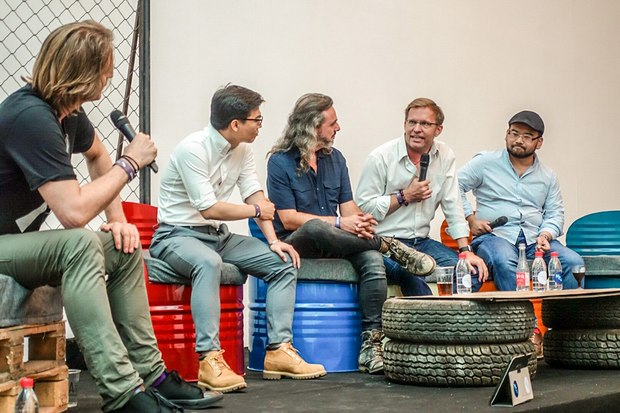The future of storytelling lies in our primal past.
In addition to the time that I spend creating stories in the present, I spend a fair amount of time thinking about the nature of storytelling in the future. This past August, I had the pleasure of participating in the "Future of Storytelling" panel at the NEU Future Forum in Beijing. Though our panelists had prodigious technical chops, we focused upon the creative aspects of storytelling and content creation. Given the day's packed agenda, our panel of five had just a half hour of time, so I needed to be succinct (which doesn't come naturally). As the microphone made its way to me, I thought about all the things I could say about the future of storytelling: how the technology will sublimate itself, how content will become increasingly immersive and adaptive, and how an active audience will be assumed. It's all been said before, and is not really that important. Ultimately, I came back to this:
The future of storytelling lies in our primal past: it helps us make sense of the world, and our place in it.
The forum’s morning speakers unintentionally reminded me of this point. Attending an event in which people talk about the future can be a depressing experience - not due to dystopian prognostications (which are generally absent), but from utopian presenters paving the road to hell with good intentions (or even more disheartening, paving the road to hell with grasping intentions disguised as altruism). Founders and VCs have the tendency to myopically champion future technology ideals ("Unlimited global energy from just one solar mega-farm!") without addressing socio-economic and ethical consequences (massive unemployment in disrupted industries, monopolization of power, price fixing - just to name a few). Listening to a VC admit during Q&A that he is less focused on social consequences and more focused on "creating value" (which is code for exploiting the many to benefit a few) is both amusing and scary.
There's a disingenuous flow of lip service about technology "liberating" us to "have more time to ourselves" (as if our technology-infused lives are less hectic than before) and to "be more creative" (as if a disrupted coal miner has simply been waiting for a good excuse to pivot into app design). Thinkers such as Dalida Turkovic are more honest in observing, "Technology is being used to fuel addiction more than creativity." If there is to be a course correction, we must take matters into our own hands. Governments and corporations are compromised. When Google found itself unable to live up to its waggish "Don't be evil." slogan, it rectified the discrepancy not by changing the offending business practices, but by dropping the constraining slogan.
As the startup world's "disruption fetish" continues, people will have a greater need than ever to make sense of the changing world around them. This is more important than ever, but it is nothing new.
The Paleolithic Lascaux cave paintings in southwest France may be mankind's earliest visual narratives, featuring imaginative abstractions that powerfully depicted the realities of life and survival 17,000 years ago. Given that the painters and their people had to enter the unfamiliar territory of the caves to create and relive the stories by flickering firelight, these environments can be regarded as early "mixed reality" experiences. These experiences served as entry points which allowed early people to literally and figuratively disengage from reality and embrace "alternate realities" full of symbols and visions, lessons and possibilities.
The impulse to create stories in which we can imaginatively and vicariously experience alternate realities has always been with us. While our technologies have evolved over the millennia, our need remains the same: to make sense of the world, and our place in it. The future of storytelling lies in our primal past - not in our tech, but in our psyche. As the pace of "progress" intensifies, as we hurtle headlong into the future, as we face a barrage of unknowns with the instincts of our cave-dwelling ancestors, the aspirational centering of storytelling is more important than ever.
The challenge is not with the constraints of the technology, but with the capabilities of the creator and their connection to the audience.












